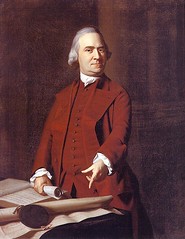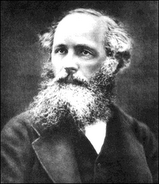Learning From Our Enemies - Part 2
It seems that Osama bin Laden knows more about the reality of world governments, and American government in particular, than most Americans. He is not the first nor is bin Laden the only well known person to be aware of and make public the reality that the world’s governments are controlled by unseen entities hidden from public view.
Benjamin Disraeli, the first Jewish Prime Minister of England, in his 1844 novel Coningsby wrote, “The world is governed by very different personages from what is imagined by those who are not behind the scenes.” This statement was not made by the ruler of a third world back water country where we might expect behind the curtain shenanigans from the ruling politicians, but by a prime minister of England, which at that time - the mid 1800s - had a world-wide empire.
Coming across the Atlantic and some 60 years later, we see that behind the government scenes, things hadn’t changed much. Another leader of a great and powerful country, the United States, declared the existence of a “government within a government.” No less a statesman than a president of the United States, Theodore Roosevelt, remarked in 1906, “Behind the ostensible government sits enthroned an invisible government owing no allegiance and acknowledging no responsibility to the people.”
Even though the U.S. Constitution plainly states that “we the people” are the rulers of our once great country, there exists, according to Roosevelt, within the United States a corrupt “invisible government” intertwined with “corrupt business” that is not beholden to the people. Roosevelt goes on to declare what must be done about this corrupt fusion of government and business: “To destroy this invisible government, to befoul the unholy alliance between corrupt business and corrupt politics is the first task of the statesmanship of today.”
As we can see by events and existing conditions of American politics in 2004, whatever American statesmen there have been during the last 100 years who have attempted to accomplish Roosevelt’s ‘first task,’ and I dare say there have been very few, have failed, miserably.
If what these leaders and many others assert is true, and I believe it is, it should be clear to any thinking objective concerned individual that there does indeed exist within the United States a ‘government within the government” and that this unseen government sits securely enthroned and has been for quite some time. It should be clear to any open minded individual that the United States is ruled by corrupt entities that possess no loyalty to the American people nor are they being held accountable for their self-serving actions.
Our ‘enemies” see America’s blind spots. It’s time “we the people” did too. It’s time we the people followed Theodore Roosevelt’s advice, and because there are no statesmen today, and because those that we have elected to govern us have been corrupted by corrupt business interests for their own gain, that we ourselves set about to “destroy this invisible government.”
The first step is for a majority of Americans to recognize that such a “government within a government” within our country does indeed exist. The first step is to get Americans out of denial. In the words of playwright Arthur Miller, “Few of us can easily surrender our belief that society must somehow make sense. The thought that The State has lost its mind and is punishing so many innocent people is intolerable. And so the evidence has to be internally denied.”
Too many Americans simply cannot face reality. They want reality to be what their visible government tells them it is: that their enemy is who their government tells them it is: somewhere else, faraway; speaks a foreign language, hates our freedom, our way of life - hates America and all Americans.
Given the vast propaganda machine in the hands of this powerful enthroned invisible government to obfuscate the otherwise obvious, to befuddle the foolish, and to defraud the voters, getting Americans out of denial will not be an easy task.
Next, Learning From Our Enemies, Part Three




















0 comments:
Post a Comment